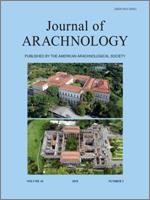Species differ in their reproductive abilities, which may affect their success. In southwest Ohio, populations of Pholcus phalangioides (Fuesslin, 1775) (Araneae: Pholcidae) have largely been replaced by Pholcus manueli Gertsch, 1937 (Araneae: Pholcidae). We suspected that differences in reproductive output underpinned the success of P. manueli. We documented the reproductive success of both species in the laboratory. Female P. phalangioides mated more readily and were more likely to produce eggsacs than P. manueli, but the timing of eggsac production and spiderling emergence were similar. The eggsacs of P. phalangioides contained smaller numbers of larger eggs but similar numbers of spiderlings emerged from the sacs of both species. We uncovered a negative relationship between egg size and number for P. phalangioides, but not for P. manueli. Our results do not explain the relative success of P. manueli, however, we have uncovered differences in the reproductive strategies utilized by these ecologically-similar congeners.
How to translate text using browser tools
1 November 2018
Comparative reproductive output of two cellar spiders (Pholcidae) that coexist in southwest Ohio
Alexander Dean Berry,
Katrina M. Culbertson,
Ann L. Rypstra
ACCESS THE FULL ARTICLE

The Journal of Arachnology
Vol. 46 • No. 3
November 2018
Vol. 46 • No. 3
November 2018
invasive species
reproduction
tradeoffs




